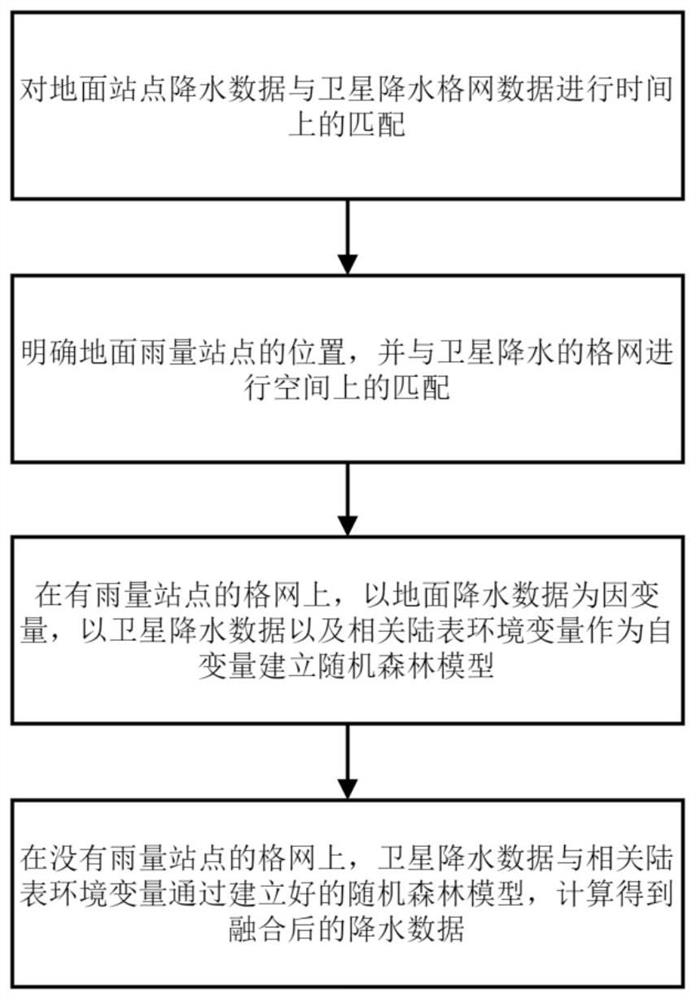Monthly-scale satellite-ground precipitation fusion method based on random forest and land surface environment variables
A technology of environmental variables and random forests, applied in machine learning, computer components, instruments, etc., can solve problems such as multi-collinear model errors, and achieve the effects of high precision, small errors, and less calculation
- Summary
- Abstract
- Description
- Claims
- Application Information
AI Technical Summary
Problems solved by technology
Method used
Image
Examples
Embodiment 1
[0021] refer to figure 1 , Embodiment 1 of the present invention comprises the following steps:
[0022] Step 1, time-matching the precipitation data of the ground station and the satellite precipitation grid data;
[0023] Step 2, specify the location of the surface rainfall station, and spatially match it with the satellite precipitation grid;
[0024] Step 3: On the grid with rainfall stations, a random forest model is established with surface precipitation data as the dependent variable and satellite precipitation data and related land surface environmental variables as independent variables;
[0025] Step 4: On the grid without rainfall stations, the satellite precipitation data and related land surface environmental variables are calculated through the established random forest model to obtain the fused precipitation data.
Embodiment
[0026] Embodiment: Select satellite daily precipitation data to be the TMPA daily data of 2011-2015, have the spatial resolution of 0.25 °; The daily precipitation observation data of meteorological station comes from China Meteorological Administration, there are more than 2000 weather stations in the study area Station; environmental variables used: digital elevation model (DEM), normalized difference vegetation index (NDVI), land surface temperature (LST, including daytime surface temperature and nighttime surface temperature), longitude and latitude. Among them, the DEM data comes from SRTM with a spatial resolution of 90 meters; the NDVI data comes from NASA’s MOD13C2 product, which is a monthly synthesized NDVI index with a spatial resolution of 0.05°; the LST data comes from NASA’s MOD11C3 product, which is Monthly synthesized LST with 0.05° spatial resolution;
[0027] Since the present invention uses all the rainfall stations to participate in the fusion, there is no ...
PUM
 Login to View More
Login to View More Abstract
Description
Claims
Application Information
 Login to View More
Login to View More - R&D
- Intellectual Property
- Life Sciences
- Materials
- Tech Scout
- Unparalleled Data Quality
- Higher Quality Content
- 60% Fewer Hallucinations
Browse by: Latest US Patents, China's latest patents, Technical Efficacy Thesaurus, Application Domain, Technology Topic, Popular Technical Reports.
© 2025 PatSnap. All rights reserved.Legal|Privacy policy|Modern Slavery Act Transparency Statement|Sitemap|About US| Contact US: help@patsnap.com


